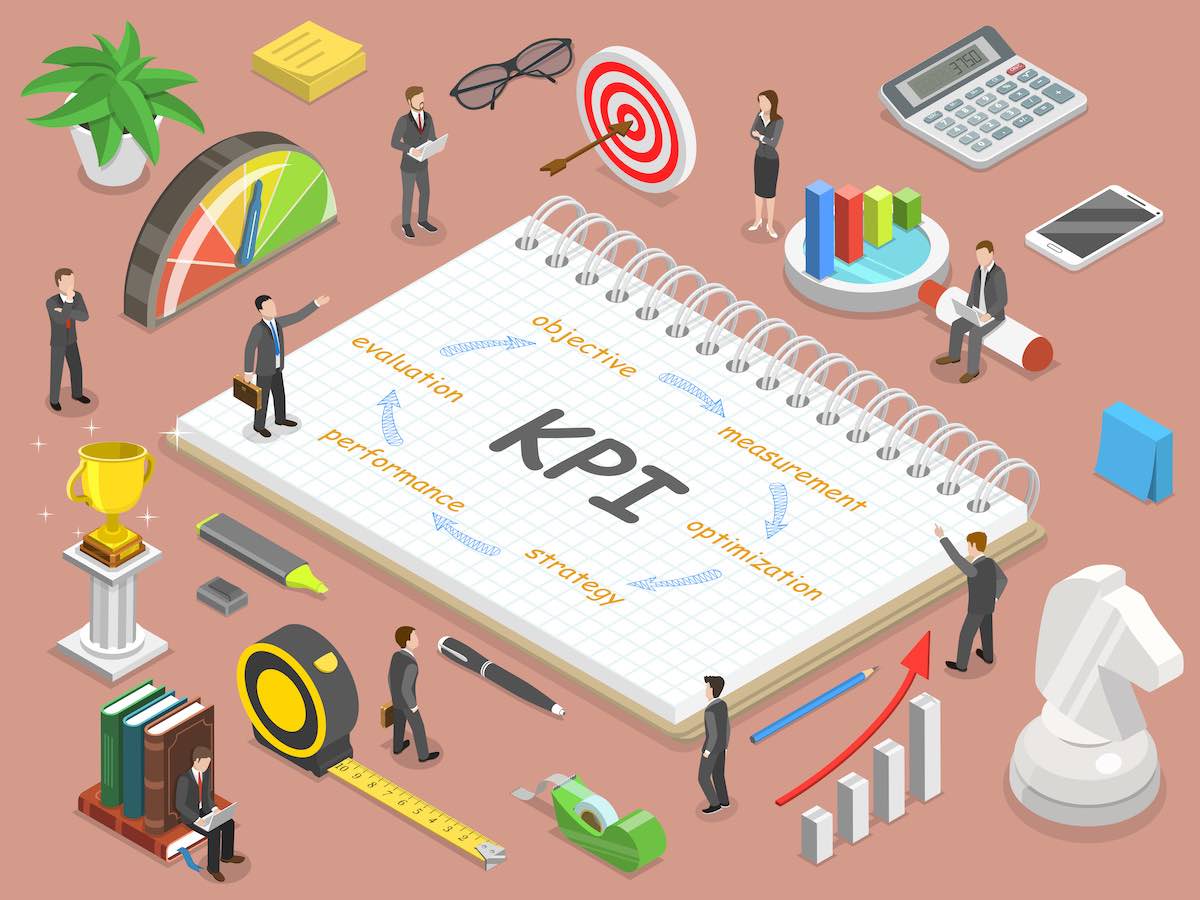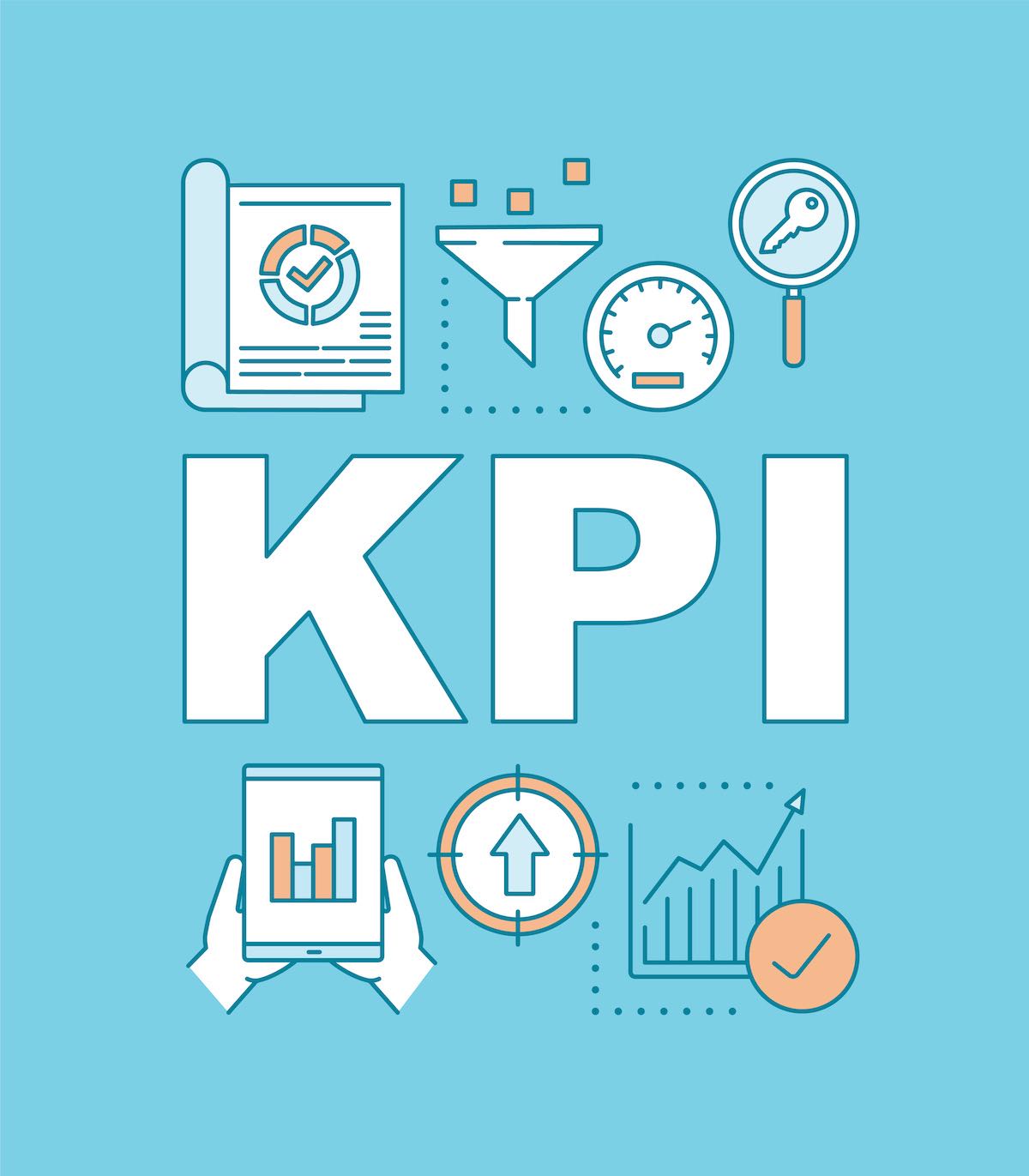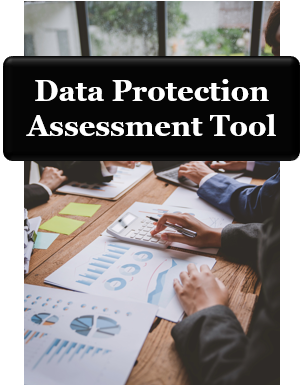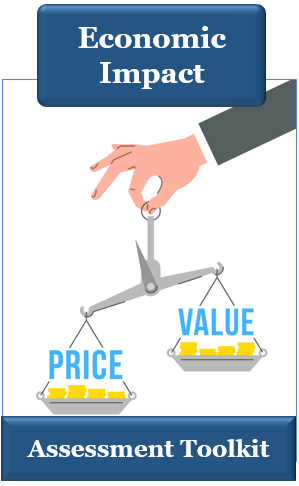Best Guide on ITIL Change Management KPI
Summary – ITIL Change Management Metrics
Information Technology Infrastructure Library (ITIL) is a comprehensive framework that outlines best practices for managing IT services. At the heart of ITIL lie KPIs, or Key Performance Indicators, which serve as essential tools for measuring the success of Critical Success Factors (CSFs) crucial for processes to achieve their intended goals. This significance is especially evident in change management, where KPIs contribute significantly to optimizing IT processes.
The core concept of ITIL KPIs revolves around providing quantifiable metrics that showcase an organization’s effectiveness in realizing key business objectives. These metrics function as instruments for setting goals, measuring performance, and fostering continuous improvements in IT services. Furthermore, they empower organizations to assess their performance against industry benchmarks, effectively demonstrating the value they deliver to stakeholders.
The realm of ITIL KPIs extends across various dimensions, encompassing technology, processes, and services. Regarding technology, these indicators monitor the health of IT infrastructure components, system uptime, security incidents, and the successful implementation of software updates.

All You Need to Know About ITIL Change Management KPI Metrics
In terms of processes, KPIs ensure actions are not only efficient but also aligned with broader business goals, thereby contributing to seamless service delivery. Additionally, within the context of services, these metrics evaluate the quality of services and how well they align with overarching business objectives.
Categorically, ITIL KPIs are classified into three primary types: Usage, Performance, and Capacity metrics. Through these diverse metrics, organizations gain invaluable insights to refine their operations and ensure alignment with their overarching objectives.
Within the domain of change management, the change control tracker emerges as a pivotal tool, offering a structured approach to recording, reviewing, and approving changes. ITIL change management KPIs play a pivotal role in quantifying the efficiency and impact of these changes. Emphasizing the practice of measurement and reporting, as highlighted in ITIL V4, enables organizations to evaluate the success of their change management initiatives and continually enhance their processes.
Want to know more? Head down to our Table of Contents and continue exploring ITIL KPI.
|
DETAILED SECTION |
|
If you’re eager to further explore ITIL metrics, proceed to our detailed sections below that provide a detailed overview. |
Table of Contents: Change Management KPIs ITIL
Keep on scrolling down this page to read each section or click any link below to go directly to that section.
- What is KPI in ITIL? | ITIL KPI Definition
- What Aspects of Business May Need KPI ITIL?
- Main Types of IT Change Management Metrics
- Most Commonly Used ITIL KPIs
- Importance of Incident Management KPIs ITIL
- ITIL CSF and KPI Examples
- How to Track KPI of Change Management in ITIL
- Conclusion | Guide on ITIL Change Management KPIs
- FAQ | Overview of KPI in ITIL
See Also: Best Guide to Efficient IT Change Control
What is KPI in ITIL? | ITIL KPI Definition
ITIL, which stands for Information Technology Infrastructure Library, is a framework for best practices in IT service management.
In the context of CSFs or ITIL Critical Success Factors are the crucial elements required for a process or function to achieve its objectives.
KPIs (Key Performance Indicators) are metrics used to measure the achievement of these CSFs. Within ITIL change management, KPIs, or Key Performance Indicators, play a pivotal role in ensuring the efficiency and effectiveness of IT processes.
So, what is KPI in ITIL?
At its core, the KPI in ITIL is a measurable value that demonstrates how effectively a company achieves key business objectives.
These KPIs ITIL or ITIL metrics allow businesses to track their performance over time and identify areas for improvement.
The ITIL KPI definition specifically refers to metrics that assess the success of various IT processes and functions.
By utilizing ITIL KPIs, businesses can:
- set targets,
- measure their achievement, and
- ensure continuous improvement in their IT services.
In essence, when someone asks, “What is KPI in ITIL?” the answer revolves around a system of metrics that enable organizations to evaluate and improve their IT service management processes.

What are ITIL benchmark metrics?
ITIL benchmark metrics are essential tools used to measure the performance of IT service management processes against recognized standards or previous performance data.
ITIL benchmark metrics are vital for organizations to identify areas of improvement, ensure alignment with business objectives, and demonstrate value to stakeholders.
Now that we know what is KPI in ITIL and what are ITIL benchmark metrics, we can move forward to what aspects of the business may need KPI ITIL.
Do you need more information on ITIL KPIs in general? Please reach out and let us know.
What Aspects of Business May Need KPI ITIL?
In today’s digital-driven business landscape, IT plays a pivotal role in ensuring smooth operations, driving innovation, and delivering value to both customers and stakeholders.
As such, managing IT services effectively becomes paramount.
This is where ITIL KPIs (Key Performance Indicators) come into play.
As we already mentioned, KPIs ITIL are designed to measure and evaluate the performance of various IT domains, ensuring alignment with business objectives.
Critical aspects of a business that require ITIL KPIs include:
- Technology – which forms the backbone of all IT solutions;
- Processes – which define how IT services are delivered and managed; and
- Services – which are the tangible IT offerings that businesses rely on.
By integrating ITIL KPIs, businesses can gain insightful metrics that drive continuous improvement, ensuring IT remains a robust enabler of business success.
Let’s delve into the aspects of technology, process, and service, and understand the necessity of ITIL KPIs for each.
1. Technology | KPI in ITIL
Why you may need KPIs ITIL for Technology?
Technology forms the backbone of IT service delivery.
ITIL KPI related to technology ensures that hardware and software components function as intended, remain secure, and are up-to-date.
This guarantees that the foundation upon which IT services are built is robust and reliable.
- Infrastructure Health: KPI ITIL can monitor the health and status of servers, networks, storage devices, and other infrastructure components to ensure they are operating optimally.
- System Uptime: ITIL metrics measure the total operational time of a system, aiming for high availability.
- Security Incidents: Track IT management tracks the number of security breaches or vulnerabilities identified and resolved, ensuring that the technology stack is secure.
- Software Patch Updates: Monitor the frequency, success rate, and impact of software patches and updates.
With the Technology aspect covered, let’s head to Processes.
Related: What Does it Really Take to Get an ITIL Certification?
2. Processes | KPI in ITIL
Why you may need ITIL KPI for Process?
Processes are the structured actions and procedures undertaken by IT teams to deliver services.
ITIL KPI metrics for processes ensure that these actions are:
- efficient,
- effective, and
- aligned with business objectives.

Why you may need ITIL KPI for Process
By monitoring and refining processes based on ITIL metrics, organizations can drive continuous improvement and ensure that IT operations run smoothly.
- Incident Resolution Time: ITIL metrics measure how long it takes, on average, to resolve reported incidents.
- Change Success Rate: Monitors the percentage of successful changes implemented without causing unplanned outages or issues.
- Problem Root Cause Analysis Time: KPIs ITIL measure the average time taken to identify the root cause of a problem.
- Service Request Fulfillment Time: ITIL KPI measures the time taken to fulfill standard service requests.
Lastly, let’s see what KPI ITIL services can benefit from.
3. Services | KPI in ITIL
Why you may need ITIL KPI metrics for Service?
The end goal of IT service management is to deliver quality services that meet the needs of the business and its users.
Service-related KPIs ITIL provide insights into:
- how well services are being received,
- where improvements can be made, and
- how closely services align with business goals.
This ensures that IT doesn’t just provide technology and processes but delivers genuine value to the organization.
- Service Availability: KPI ITIL monitors the uptime and accessibility of IT services to end-users.
- Service Usage: Measures how frequently and extensively a service is utilized.
- Customer Satisfaction: Gauges user satisfaction with IT services, typically through surveys or feedback mechanisms.
- Service Level Agreement (SLA) Adherence: KPI ITIL monitors how consistently IT services meet or exceed agreed-upon performance standards or SLAs.
For an IT organization to be successful, it must excel in the domains of technology, process, and service.
ITIL KPIs offer a structured way to measure, evaluate, and continuously enhance performance across these aspects.
With aspects covered, we’ll head on to types of ITIL KPI metrics.
Popular Article: Everything You Need to Know About Stage Gate Model in OCM & Project Management
Types of ITIL KPIs | Overview of the Main ITIL Change Management Metrics
IT change management metrics provide a structured way to evaluate the effectiveness and efficiency of IT service management.
ITIL key performance indicators offer insights that can drive improvements and align IT services with business objectives.
Among the various KPIs ITIL, the main categories include:
- Usage KPI ITIL
- Performance ITIL KPI
- Capacity KPI ITIL
In the sections below, we’ll take a closer look at each of the main types of ITIL metrics.
Related: Guide on IT Change Management Best Practices
1. Usage ITIL KPIs – Purpose, Examples, and Significance of Usage KPIs ITIL
Usage KPIs primarily focus on the adoption and utilization rate of IT services and systems.
Purpose: These ITIL change management KPIs measure how frequently and to what extent IT services are accessed by users.
⋅ Usage ITIL KPI Examples
Service Access Frequency: This ITIL change management KPI gauges how often a specific IT service or application is accessed.
Feature Usage Rate: This ITIL OCM metric provides insights into which tools or features within a service or application are most actively used.
Knowledge Base Access Rate: This KPI ITIL monitors how often users refer to knowledge bases or self-help resources.
⋅ Significance: Monitoring Usage KPIs can help IT teams discern which services or features are most valuable to users. It also helps identify areas for enhancement, potential training needs, or shifts in usage patterns that could signal underlying issues.
Do you have any questions about what phase is success of change management is measured during in ITIL? Don’t hesitate to reach out and let us know.
2. Performance KPIs ITIL – Purpose, Examples, and Significance of Performance ITIL Metrics
Performance KPIs evaluate the responsiveness, efficiency, and reliability of IT services and processes.
⋅ Purpose: To gauge how IT systems and services perform under various loads and conditions.
⋅ Performance ITIL KPI Examples
Service Availability: The amount of time a service is operational and available.
Incident Response Time: ITIL change management KPI that measures the duration between an incident being reported and the initial response.
Service Throughput: Change management KPIs ITIL indicates the volume of transactions or data that a system can handle in a given time.
⋅ Significance: By focusing on Performance KPIs, organizations can ensure that IT services not only meet but exceed the performance standards agreed upon in SLAs (Service Level Agreements). Regular monitoring can lead to timely optimizations, ensuring consistent user satisfaction.
Read More: Best Guide on Change Control Process & Board Management (with FREE Templates)
3. Capacity KPIs ITIL – Purpose, Examples, and Significance of Performance ITIL Metrics
Capacity IT change management metrics are concerned with the potential, limitations, and scalability of IT systems and services.
⋅ Purpose: These KPIs ITIL offer insights into whether IT services and infrastructures have adequate resources to handle current demands and scale for future requirements.

Purpose of KPI ITIL
⋅ Capacity ITIL KPI Examples
Resource Utilization: Evaluates the percentage of available IT resources (CPU, memory, storage) that are being utilized.
Peak Load Times: Helps IT teams identify when systems experience their highest loads.
Service Scalability ITIL Metrics: Tracks the ease with which a service can handle increased demands or expand its capacity.
⋅ Significance: Monitoring Capacity KPIs is essential for planning, budgeting, and resource allocation. It ensures that services are resilient and can adapt to evolving business needs without degradation or disruption.
These ITIL KPI categories offer a holistic view of IT service management.
Through careful observation and analysis of Usage, Performance, and Capacity KPIs ITIL, organizations can ensure that their IT infrastructures are robust, efficient, and well-aligned with business goals.
What Are the Most Commonly Used ITIL KPIs? | ITIL Metrics You Should Know About
In the ITIL framework, KPIs provide a structured method to assess the efficiency and effectiveness of IT service management processes.
Among the myriad of ITIL change management KPIs available, the following seven stand out due to their universal applicability and significance in gauging the performance of IT services:
1. Service Availability – ITIL Change Management Metrics
Service availability KPI ITIL measures the percentage of time an IT service is available and operational to users.
It is often calculated as (Total uptime / (Total uptime + Total downtime)) * 100.
⋅ Importance of Service Availability ITIL change management KPI:
A higher service availability percentage ensures that users can access the service whenever needed, leading to enhanced productivity and user satisfaction.
2. Time to Resolve – IT Change Management Metrics
This KPI in ITIL calculates the average time taken to address and resolve an incident or problem from the moment it’s reported.
⋅ Importance of Time to Resolve ITIL Key Performance Indicators:
A shorter time to resolve typically indicates efficient incident and problem management processes, ensuring minimal disruption to end users.
3. First-Call Resolution Rate – Change Management KPIs ITIL
This ITIL KPI refers to the percentage of incidents or service requests resolved during the first interaction or call to the service desk.
⋅ Importance of First-Call Resolution Rate ITIL Change Management KPIs:
A higher first-call resolution rate reduces costs and increases user satisfaction, as it shows that user issues are addressed promptly without needing escalations or multiple interactions.
Do you have any questions or input about ITIL change management KPIs we provided? Just reach out and let us know.
4. SLA Breach Rate – ITIL Change Management KPI
SLA breach rate ITIL KPI represents the percentage of times the IT services fail to meet the stipulated Service Level Agreement (SLA) terms.
⋅ Importance of SLA Breach Rate KPI ITIL:
Monitoring the SLA breach rate helps organizations identify areas needing improvement and ensures that they consistently deliver on their service commitments.
5. User/Customer Satisfaction – Change Management KPIs ITIL
Typically gauged through surveys, this KPI IT change management metrics measures the satisfaction levels of users or customers with the IT services provided.
⋅ Importance of User/Customer Satisfaction ITIL Change Management Metrics:
By monitoring user satisfaction, organizations can identify areas of improvement, enhance the overall user experience, and retain customers.
6. Cost per Contact – ITIL Change Management KPI Metrics
Cost per contact KPI in ITIL calculates the average cost incurred by the IT service desk for each user interaction, be it a call, email, or any other form of contact.
⋅ Importance of Cost per Contact ITIL Metrics:
By understanding the cost per contact, organizations can better manage their resources and budget, aiming to deliver efficient yet cost-effective services.
7. Net Promoter Score (NPS) – KPIs ITIL
This ITIL change management KPI is an index that measures the likelihood of users or customers recommending IT services to others, ranging from -100 to 100.
⋅ Importance of NPS ITIL change management KPIs:
A high NPS indicates user loyalty and satisfaction, reflecting the overall quality of IT services provided.
By consistently monitoring and analyzing these ITIL key performance indicators, organizations can continually refine their IT service delivery, ensuring alignment with user expectations and business objectives.
With key change management KPIs ITIL covered, it’s time to talk about ITIL KPIs incident management.
Don’t Miss: Step-by-Step Project Management Guide
Do you have any questions about ITIL change management metrics? Please reach out and let us know. We’ll love to hear from you.
Importance of Incident Management KPIs ITIL
To ensure the effectiveness and efficiency of an incident management process within the ITIL framework, specific KPIs ITIL metrics have been highlighted as crucial.
These ITIL change management metrics not only help in assessing the incident management system’s responsiveness but also in ensuring that IT services are in sync with business objectives.
Let’s take a quick look into these critical ITIL KPIs incident management metrics:
⋅ Total Number of Incidents
This incident management KPIs ITIL metric tracks how many incidents are reported over different time intervals, such as a week, month, quarter, or year.
Monitoring this ITIL OCM metric can reveal trends and patterns. A sudden surge in incidents might necessitate an in-depth investigation.
This metric aligns with the ITIL KPIs incident management framework to measure incident frequency.
⋅ Average Incident Response Time
This ITIL KPIs incident management metric measures the duration from the report of an incident to when it’s delegated to the appropriate team.
A reduced response time indicates efficiency in the preliminary stages of handling an incident.
⋅ Mean Time To Acknowledge (MTTA)
This ITIL KPIs incident management metric quantifies the average time from system alert generation to a team member’s acknowledgment.
This is vital for incident management KPIs ITIL as a quick acknowledgment can reduce escalation and improve system reliability.
⋅ Mean Time To Resolution (MTTR)
MTTR incident management KPIs ITIL represents the average duration to close or resolve an incident.
Differentiating MTTA and MTTR can provide insights into how promptly issues are addressed post-acknowledgment.

Mean Time to Resolution (MTTR) KPI in ITIL
⋅ Mean Time Between Failures (MTBF)
This ITIL change management KPI metrics gauges the average interval between system or product failures.
A diminishing MTBF implies the need for robust preventive measures, a cornerstone for the change control tracker in ITIL.
⋅ First Time Fixes
This KPI of change management in ITIL chronicles the incidents that get resolved in the initial attempt without subsequent alerts.
An escalating number in this metric indicates maturing incident handling processes, hinting towards the achievement of ITIL critical success factors.
⋅ Uptime
This incident management KPIs ITIL metric represents the time duration a system or service is active and functional.
High uptime percentages signify dependable systems, contributing to enhanced user trust and satisfaction.
⋅ Downtime
Opposite to Uptime, Downtime ITIL change management metric represents the periods when a system or service isn’t operational.
Regularly monitoring downtime and its implications on customers and associated costs is integral for maintaining system reliability and achieving ITIL critical success factors and benchmarks.
Incorporating these metrics into the incident management process and routinely evaluating them against set benchmarks, as defined by ITIL KPIs incident management, ensures that services are continually refined and remain aligned with overarching business objectives.
With a good understanding of incident ITIL change management KPIs, let’s get a good overview of ITIL CSF and KPI examples to get the whole picture
Popular Article: Best Change Management Risk Assessment & Project Management Risk Mitigation
ITIL CSF and KPI Examples
Navigating the vast landscape of IT Service Management requires more than just theoretical knowledge; practical insights often make the difference.
As organizations harness the power of the ITIL framework, tangible examples serve as illuminating touchpoints.
Within this section, we will journey through specific examples of ITIL Critical Success Factors (CSFs) and Key Performance Indicators (KPIs).
These examples provide a snapshot into the diverse applications and scenarios where ITIL’s guiding principles come to life, offering organizations a clearer path to operational excellence and refined service delivery.
Below are some ITIL CSF and KPI examples and scenarios for a select few processes:
- Service Desk/Incident Management
CSF: Quick restoration of normal service after an incident.
KPI: Average time taken to resolve an incident.
KPI: First-call resolution rate.
KPI: Percentage of incidents escalated.
CSF: User satisfaction with incident handling.
KPI: Percentage of users satisfied with the incident resolution process.
- Problem Management
CSF: Reduction in recurring incidents.
KPI: Number of recurring incidents.
KPI: Percentage reduction in recurring incidents over a set period.
CSF: Timely identification of problems.
KPI: Average time from incident detection to problem identification.
- Change Management
CSF: Successful implementation of changes.
KPI: Change success rate.
KPI: Number of incidents resulting from changes.
CSF: Adherence to change schedules.
KPI: Percentage of changes implemented within the agreed schedule.
- Service Level Management
CSF: Ensure IT services meet business requirements.
KPI: Percentage of Service Level Agreements (SLAs) met.
KPI: Number of SLA breaches.
- Knowledge Management KPI ITIL
CSF: Ensure that the right knowledge is available at the right time.
KPI: Usage statistics for the knowledge database.
KPI: Percentage of outdated or incorrect articles flagged and updated knowledge management KPI ITIL.
Remember, these are just some of the common CSFs and KPIs rooted in ITIL best practices, each organization should tailor these to fit its specific needs, objectives, and context.
How to Track IT Change Management | Measurement and Reporting ITIL V4
ITIL change management focuses on ensuring that all changes are made in a controlled manner, minimizing disruptions while maximizing benefits.
The ITIL OCM (Organizational Change Management) further deepens this principle, emphasizing the need for changes to be aligned with organizational objectives and strategies.
Track IT Change Management – Change Control Tracker
One critical tool in the arsenal of ITIL change management is the change control tracker. This is a systematic method to track IT change management activities, ensuring that every change is logged, reviewed, and approved or rejected based on its merit and impact.
The change control tracker helps in maintaining a record of all:
- change requests,
- their statuses, and
- outcomes
Moreover, to understand and continually improve the change management process, it’s essential to rely on the KPI of change management in ITIL.
These Key Performance Indicators provide quantitative measures about the efficiency, effectiveness, and impact of the changes implemented.
For instance, one might track the number of successful changes vs. failed ones, or the average time taken to implement a change.

Tracking KPIs ITIL
How Do You Determine the Effectiveness of Your Changes?
The success of change management is measured during in ITIL through a variety of ways.
It’s not just about ensuring that the change was implemented. Instead, the success of change management is measured during in ITIL process focuses on whether the change brought the desired benefits: how well it was received by the users, and whether it caused any unintended disruptions or issues.
This multi-faceted approach ensures that the full spectrum of change impact is assessed.
To facilitate this, measurement and reporting ITIL V4 is an integral element.
It ensures that organizations have a clear view of how their change management processes are performing.
Through consistent measurement and reporting, IT departments can recognize patterns, anticipate potential issues, and optimize their change management protocols.
This is where tools like the change control tracker prove indispensable, providing valuable data to aid in this analytical process.
In conclusion, the success of ITIL change management largely depends on its adaptability, thoroughness, and ability to use tools like the change control tracker efficiently.
By focusing on the KPI of change management in ITIL and ensuring that the success of change management is measured during in ITIL, organizations can maintain a strong grip on their change initiatives.
With ITIL OCM principles and the robust framework of measurement and reporting ITIL v4, any IT organization can ensure that they are on the right track to manage, measure, and continuously refine their change management processes.
Are you looking for more ITIL KPI examples? Get in touch and let us know!
Conclusion: Guide on ITIL Metrics
ITIL KPIs and metrics form the backbone of efficient IT service management and change tracking. They offer a structured framework to gauge progress, align strategies, and drive improvements across technology, processes, and services. By providing insightful data, these ITIL metrics empower organizations to enhance their operations and ensure alignment with objectives.
In a rapidly evolving landscape, ITIL KPIs and metrics stand as essential tools that bridge the gap between technological advancements and the attainment of business goals.
Ultimately, KPI in ITIL is pivotal in steering organizations toward sustainable success in IT service management and change tracking.
Embrace these tools as your strategic allies, propelling your organization to achieve excellence and alignment with business objectives. Your commitment to harnessing the power of ITIL will undoubtedly pave the way for a more streamlined and effective IT landscape.
Best of luck on your journey!
Don’t Miss: Change Engagement Plan for Engaging Impacted Users to Increase Change Adoption
FAQ: Overview of KPIs in ITIL
What is KPI in ITIL? What is the ITIL KPI definition?
KPI ITIL is a quantifiable metric that serves as a crucial measure of the success or effectiveness of a specific process, activity, or area within IT service management. These indicators are used to evaluate whether an organization is achieving its desired goals, objectives, and critical success factors.
The ITIL KPI definition encompasses the concept of using measurable values to assess and track the performance of various aspects of IT services, such as technology, processes, and services.
What are the main types of change management KPIs ITIL?
Among the various KPIs ITIL, the main categories include:
• Usage
• Performance
• Capacity
What is knowledge management KPI ITIL?
In ITIL, Knowledge Management KPIs are metrics used to measure and evaluate the effectiveness of knowledge management processes within an organization. Knowledge management in ITIL refers to the practice of capturing, storing, organizing, and sharing information and expertise to improve decision-making, problem-solving, and service delivery
What are some critical ITIL KPIs incident management metrics?
Some of the critical metrics include:
• Total Number of Incidents
• Average Incident Response Time
• Mean Time To Acknowledge (MTTA)
• Mean Time To Resolution (MTTR)
• Mean Time Between Failures (MTBF)
• First Time Fixes
• Uptime
• Downtime
Note: Content on OCM Solution's ocmsolution.com website is protected by copyright. Should you have any questions or comments regarding this OCM Solution page, please reach out to Ogbe Airiodion (Change Management Lead) or the OCM Solutions Team today. OCM Solution was previously known as Airiodion Global Services (AGS).
External sources: stock.adobe.com




